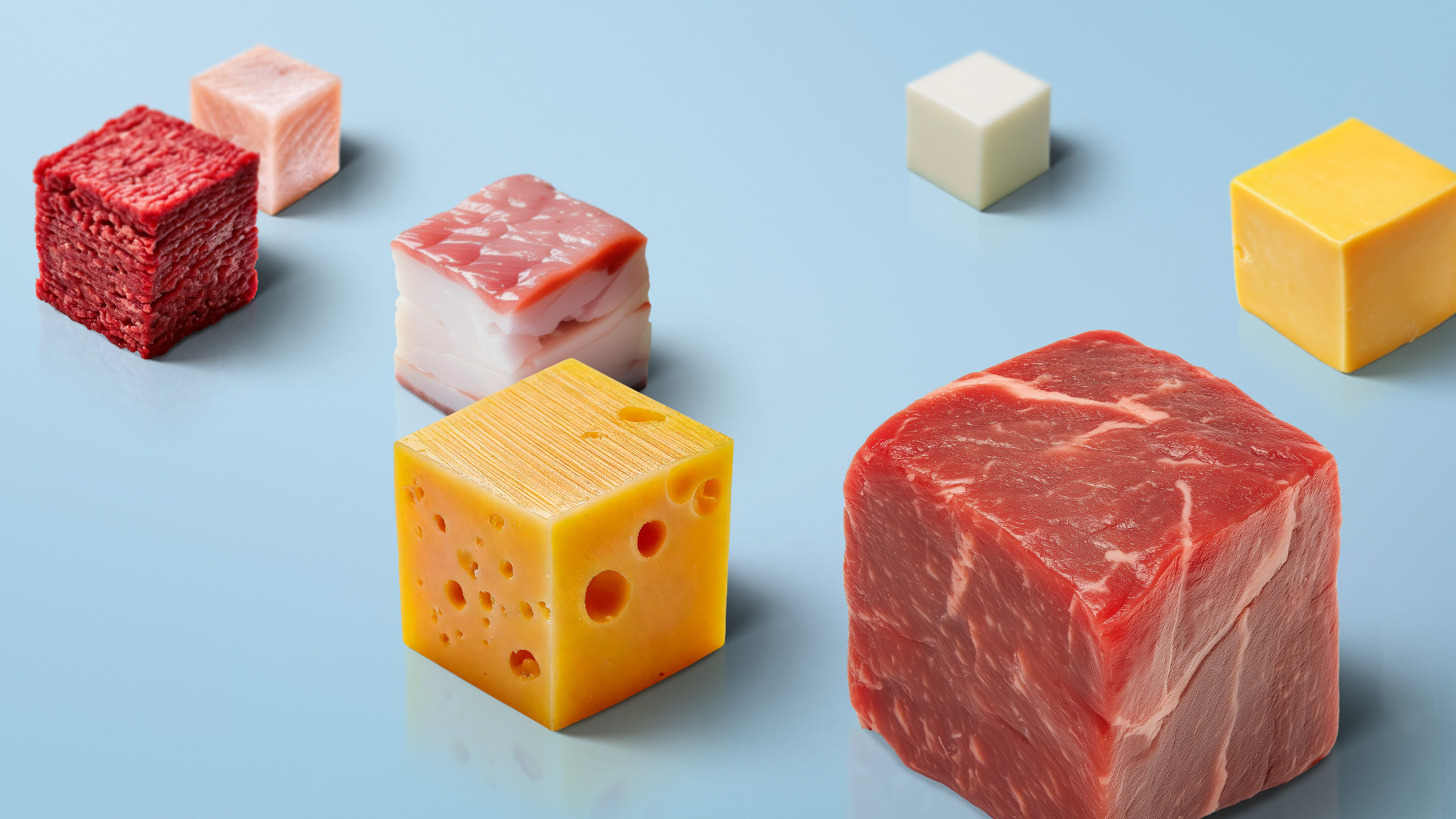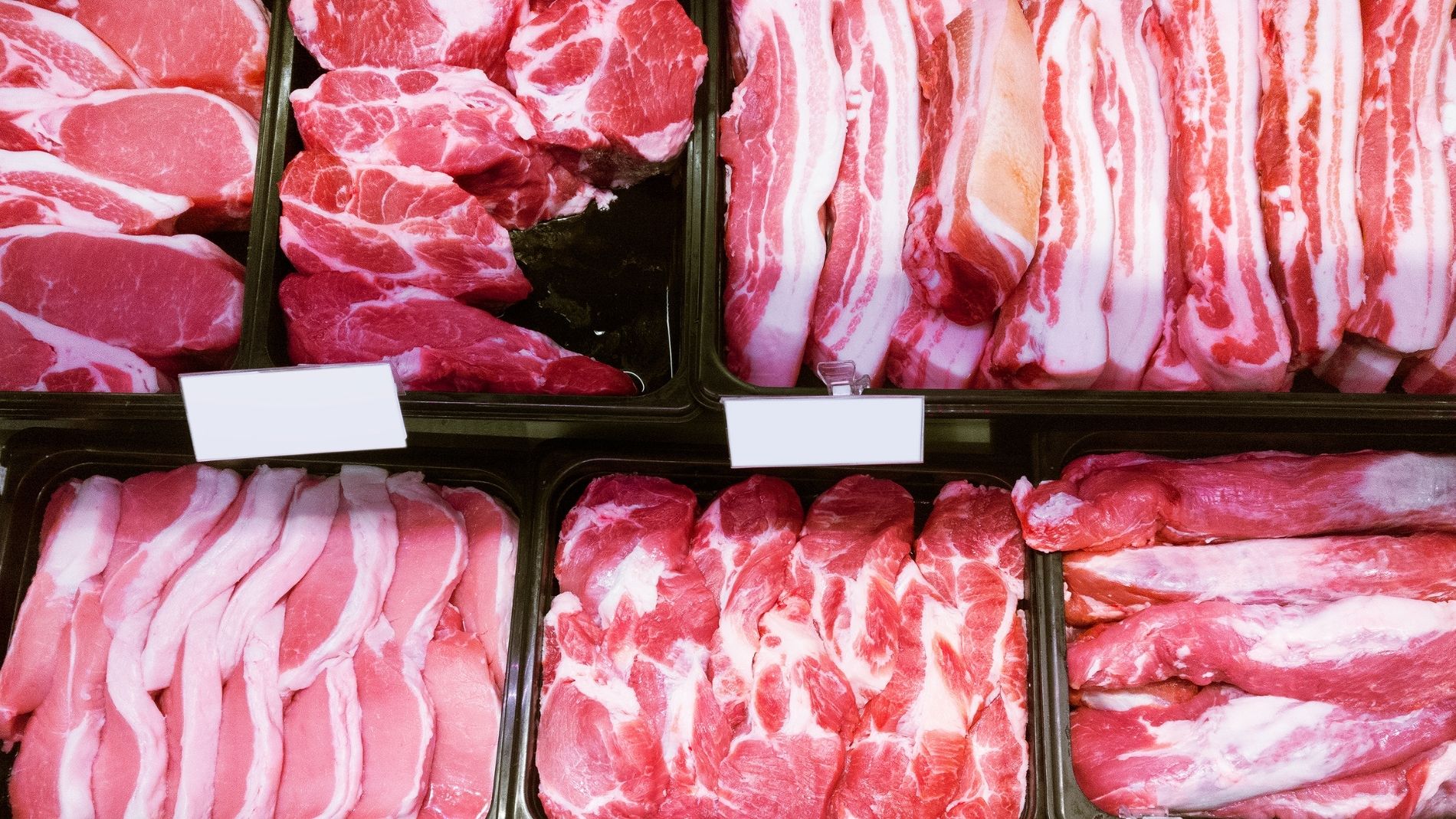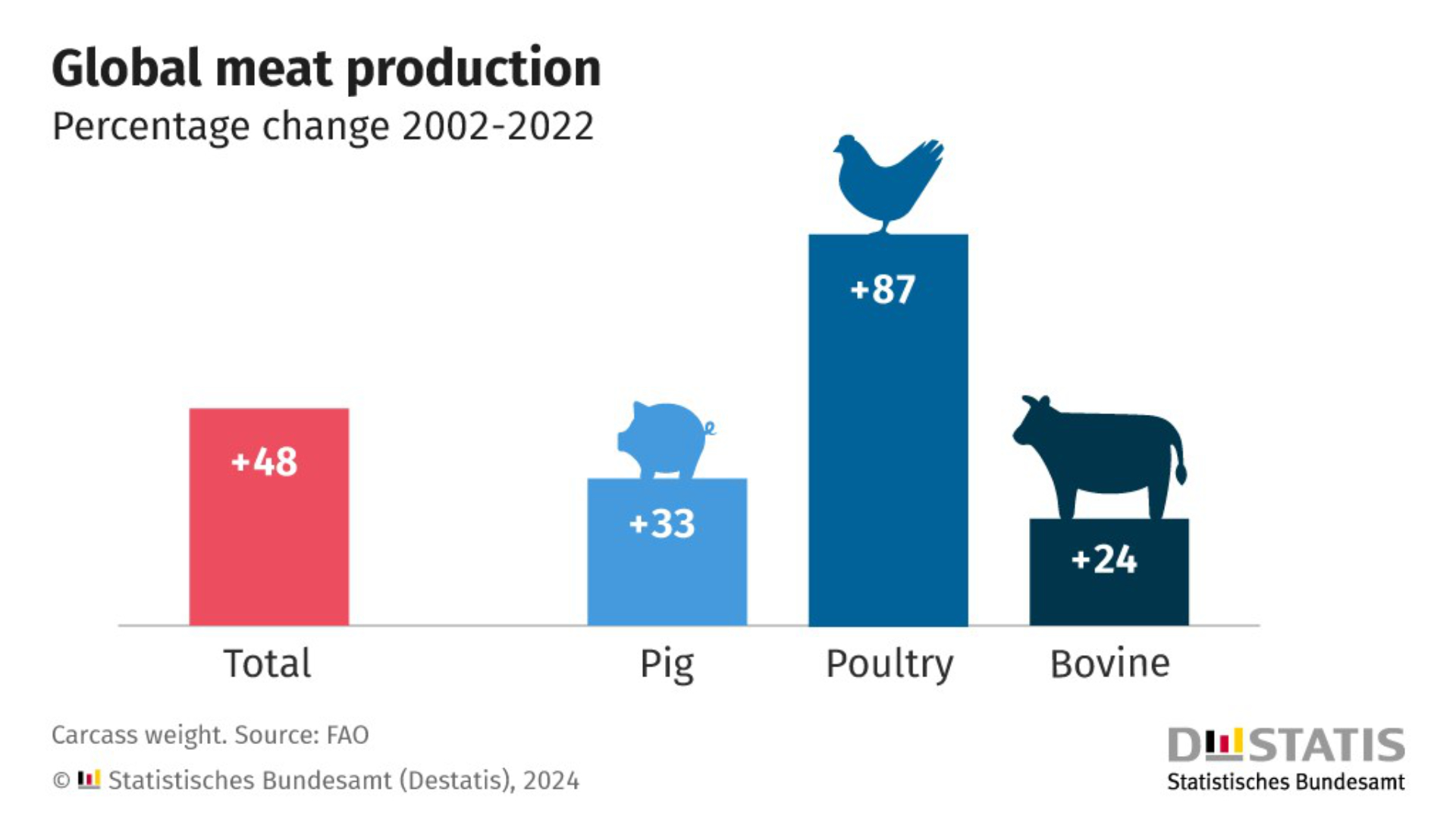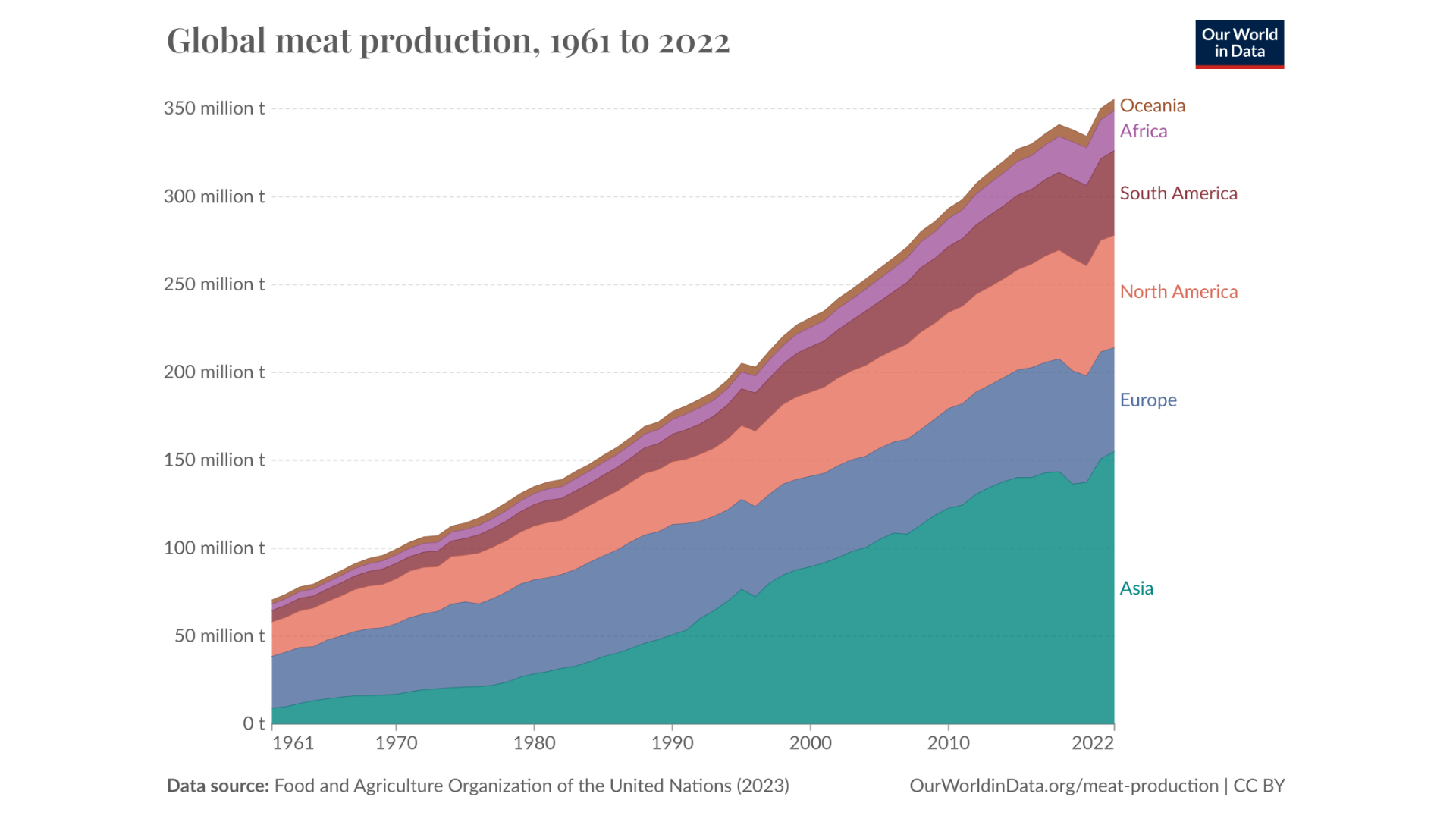Animal protein is found in meat, fish, eggs, milk and dairy products. A significant proportion of the protein consumed worldwide comes from animal sources. The share of animal protein in the diet depends on regional eating habits and local economic conditions.
According to the FAO, global meat production in 2020 was about 335 million tonnes, while milk production was about 900 million tonnes. Eggs contributed to the total amount of animal proteins with a volume of over 76 million tonnes (2020), fish with about 179 million tonnes (2020).
A look at the Global Food Safety Index1 shows that the protein supply is strongly linked to the availability of animal-based foods. A lack of protein has consequences for physical and mental development in humans. Due to their very high biological value, animal proteins provide the body with all essential amino acids. Even those that the human body cannot produce itself. Compared to plant based protein, even a small amount of animal protein is enough to cover the daily requirement of protein.
According to estimates, 30 - 40 % of the proteins consumed worldwide come from animal meat. Poultry, pork and beef dominate the global meat market.
Sheep and goat meat, as well as game, only play a minor role on the world market. Goat meat is mainly eaten in African countries. In the Middle East both, goat and sheep meat, are consumed.
The average meat consumption per capita worldwide in 2022 was 44.5 kilograms. Of this, 17 kg was poultry (38.2 %), 15.3 kg was pork (34.4 %), 9.4 kg was beef (21.1 %) and 2.8 kg was other types of meat such as sheep, goat and others (6.3 %).2
Fish and seafood as a source of protein
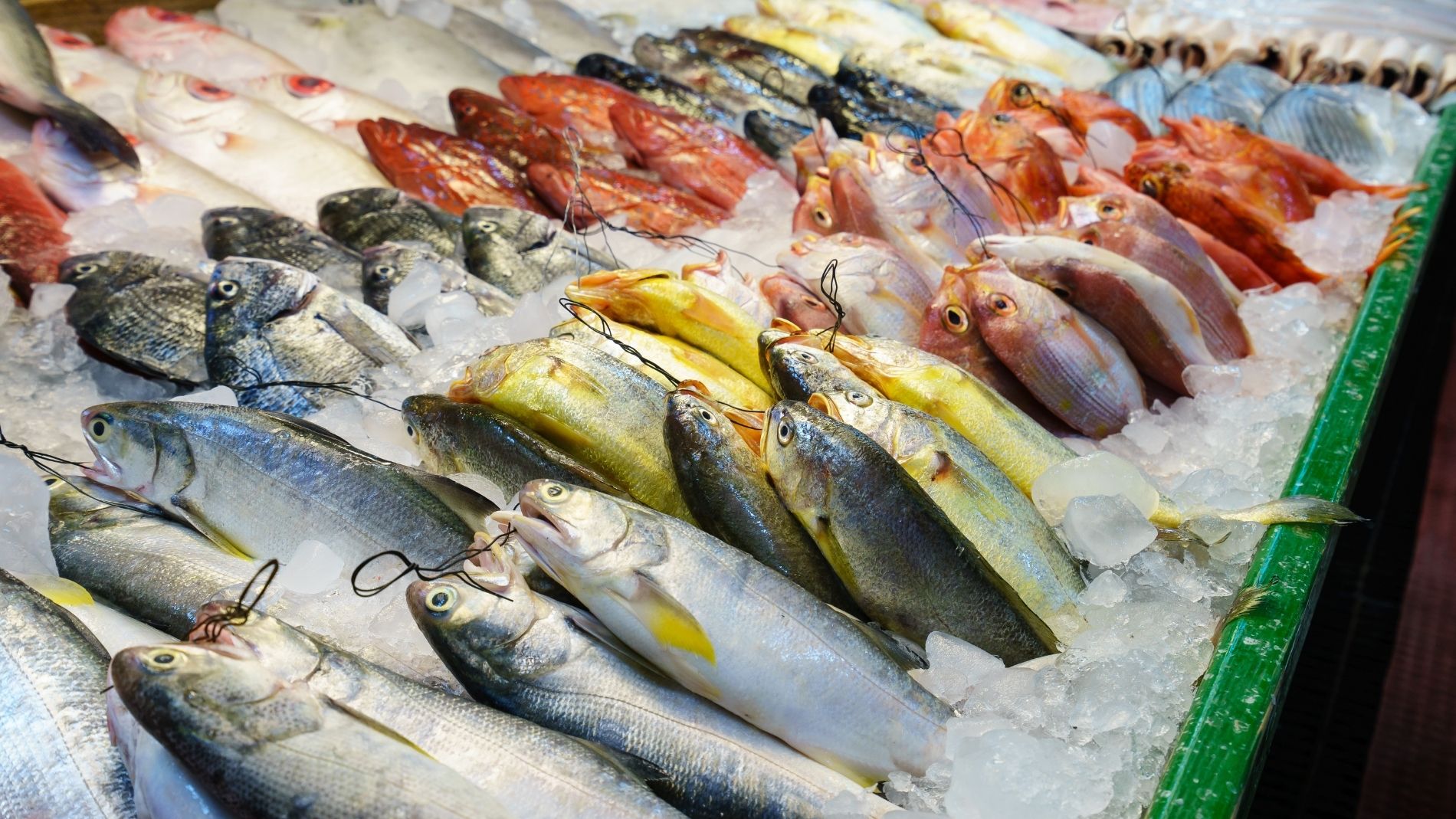
Fish and seafood are estimated to contribute about 17 % of the global protein supply. However, in some coastal regions and developing countries, this share can be significantly higher, as fish is the main source of animal protein there.
According to the Food and Agriculture Organization of the United Nations (FAO), global fisheries production in 2020 was about 179 million tonnes, including wild fish and aquaculture. The production of seafood (including shellfish) also contributes to this total.
Milk and dairy products as a source of protein

According to the FAO, global milk production in 2020 was around 900 million tonnes. This figure includes mainly milk from cows and buffaloes, but also milk from goats and sheep.
Milk and dairy products, such as cheese, butter, cream or yoghurt, provide a significant proportion of the global protein supply. It is estimated that about 20 % of the animal protein consumed worldwide comes from milk and dairy products. This can vary by region, with some countries, such as Europe and North America, consuming a higher proportion.
As the world's largest milk producer, India supplies 22 % of the global milk supply, followed by the United States, Pakistan, China and Brazil.3
Egg as a source of protein
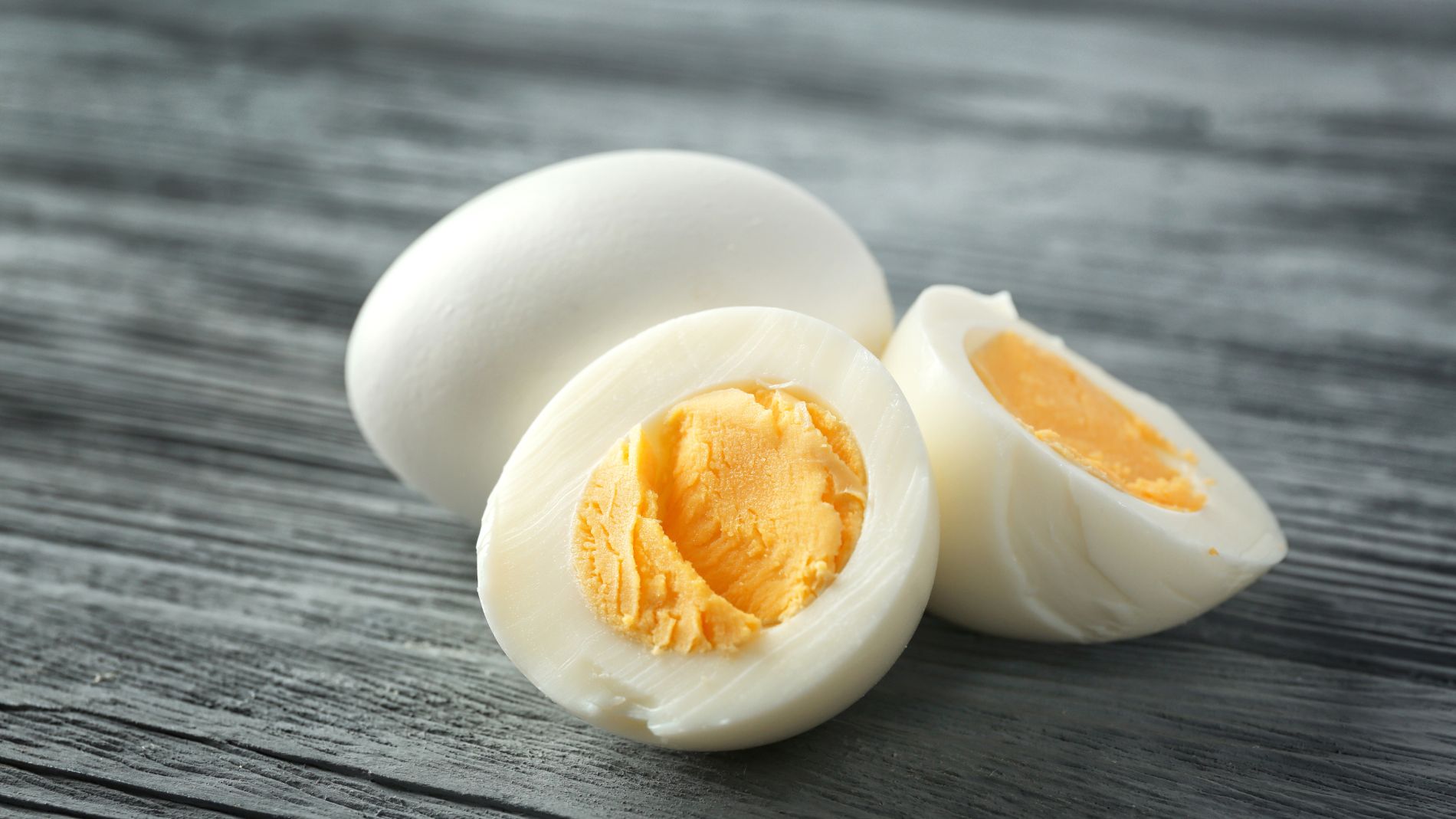
Eggs are estimated to contribute 7 - 10 % of the world's protein supply. Eggs have a particularly high protein value.
Eggs are an important part of the global protein supply. They are one of the best sources of high-quality essential amino acids, are relatively inexpensive and readily available everywhere on earth. Compared to other animal protein sources, chickens require few resources (feed, water, land) to produce eggs.4
Quellen:
1 Global Food Security Index 2022. Economist Impact. 27.01.2025.
2 Global animal farming, meat production and meat consumption. 27.01.2025
3 Food and Agriculture Organization of the United Nations (FAO). 2024. World Food and Agriculture – Statistical Yearbook 2024. Rome.
4 FAO Egg Facts. 2015. 27.01.2025
